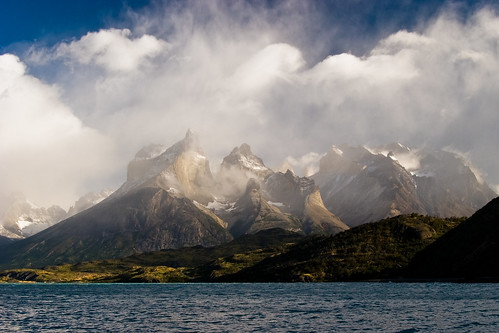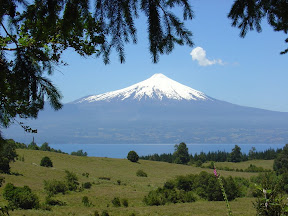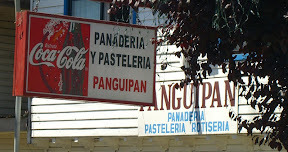During her confirmation hearings, Justice Sotomayor was excoriated over and over again over her comment in a speech about the specific wisdom of a “wise Latina woman.” Here is the exact quote:
Second, I would hope that a wise Latina woman with the richness of her experiences would more often than not reach a better conclusion than a white male who hasn't lived that life.
Sotomayor was responding to an assertion, often attributed to Sandra Day O'Connor, that “a wise old man and wise old woman will reach the same conclusion in deciding cases.” Sotomayor argued against the presumption that gender, race, ethnicity, class, and life experience do not have an influence on how we make judgments even if we as individuals are consciously striving to be reasonable and impartial in our treatment of all parties in the case at hand.
And Sotomayor, is absolutely right. The weight of recent research in psychology and the emerging fields of cognitive and neuroscience show that our experiences and our emotions, our sense of who we are and what groups we feel an affiliation with, all of this affects, though it does not determine, how we make decisions.**
Take gender, for example. We need only look at the recent Supreme Court decision, Safford Unified School District v. Redding, which ruled that a school district illegally conducted a strip search of a thirteen-year-old girl, to recognize that the presence of a woman on the court was an important factor in the Court's decision-making process. In the oral arguments, Justice Breyer suggested that it was “no big deal when kids strip. After all, they do it for gym class all the time.” Outraged, Judge Ruth Bader Ginsburg responded angrily that “boys may like to preen in the locker room but girls, particularly teen-aged girls, do not” (See NPR transcript for April 21,2009.)
As a woman, Judge Ruth Bader Ginsburg understood , in ways that the other male justices could not, how traumatic it would be for a thirteen-year-old girl to undergo such a search. In a culture that simultaneously hypersexualizes the female body and yet assumes that pubescent girls are both sexually innocent and modest, it's inevitable that young women feel much more anxiety and embarrassment about the physical evidence of sexual maturity and do not want to strip in front of strangers. The girl who experienced the strip search developed stomach ulcers, a clear symptom that being forced to strip down to her underwear and then pull those garments away from her body was far different for her than changing her clothes for gym class.
This is not to say that I believe strip searches of students on such flimsy evidence as the school district had in this case is any more justified for boys than it is for girls. But Ginsburg recognized that gender made a difference in how much more negatively it could affect a young woman. Ultimately the majority of the court agreed with her and the decision ruled against the school district and in favor of the young woman.
What Judge Sotomayor was talking in about in her speech was precisely the kind of effect that Ginsburg's comment can have when judges are trying to reach a consensus about a particular case. In her “wise Latina” speech, Sotomayor stated: “I accept the thesis of a law school classmate, Professor Steven Carter of Yale Law School...that in any group of human beings there is a diversity of opinion because there is both a diversity of experiences and of thought.” She then went on to argue that “whether born from experience or inherent physiological or cultural differences, our gender and national origins may and will make a difference in our judging.”
This is not an argument in favor of a particular cultural, ethnic, racial, or gender bias. Rather it is an argument that since we all have these biases built into the very neural networks of our brain, our conscious awareness of them can bring new perspectives to the process of judging, just as Ruth Bader Ginsburg's tart comment on adolescent nudity, brought a new dimension to the case at hand and gave the male justices some insight into what thirteen-year-old Savana Redding might have felt the day she was strip-searched.
In fact, the more we are aware of our emotions and the processes we use to reach decisions, and most importantly, the more we are exposed to the life experiences of others who are not like us, the more we are able to expand the range of internal perspectives we use to make decisions that don't simply reinforce our inherent predilections.
In her “wise Latina” speech, Judge Sotomayor demonstrated that she is very much aware of the balance we must strike between drawing on our own experience and the need to try understand the experiences of others in striving to achieve our best semblance of impartiality. As she put it: “The aspiration to impartiality is just that -- it's an aspiration because it denies the fact that we are by our experiences making different choices than others.
For these reasons, Judge Sotomayor's presence on the Supreme Court represents not just a symbolic victory for diversity, but a real and practical one. As she has said, "Personal experiences affect the facts that judges choose to see. My hope is that I will take the good from my experiences and extrapolate them further into areas with which I am unfamiliar. I simply do not know exactly what that difference will be in my judging. But I accept there will be some based on my gender and my Latina heritage." In a society where women constitute about half the population, and as we rapidly move towards the day when there is no single majority race or ethnicity in the United States, that kind of self-awareness and openness to other experiences is precisely what we need more of on the highest court in the land
***In his seminal work, Descartes' Error, Antonio Damasio, Professor of Neurology at USC, argues that the ideal of pure reason championed by philosophers from Plato to Kant is wrong. Instead, he argues that “certain aspects of emotion and feeling are indispensable for rationality. At their best, feelings point us in the proper direction, take us to the appropriate place in a decision-making space, where we may put the instruments of logic to good use,” (“Introduction,” p. xiii). More recent work in neuroscience has confirmed and expanded Damasio's findings.











